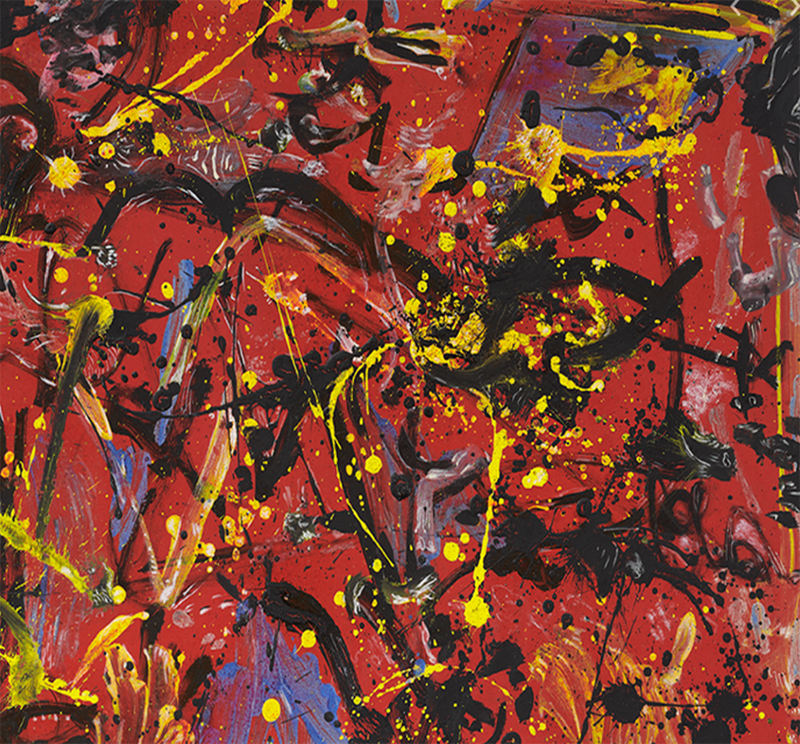Pollock was an abstract expressionist artist. In ordinary words, he did not paint specific subjects such as people, landscapes, or objects. His paintings were non-representational, which means they did not look like anything. In one of their issues, Life magazine asked:Is he the greatest living painter in the United States?The fact that the magazine asked a question instead of affirming it is notable by itself. Can you really say a painter is the best when his work of Art could be confused with the creation of a toddler?
Let’s not get confused. In 2016, Number 17A (Pollock renounced to traditional titles and used numbers for his paintings instead) fetched US$200 million in a private purchase. While controversial, his talent cannot be dismissed. But what was the source of his talent? What made him so unique?
Personal issues are known triggers of the most exquisite, tragic, and famous art pieces, and Jackson Pollock had his share of them. He endured a hard life from his early years, moving from one place through another, never setting root or making tight bonds with anyone. His father abandoned the household, which made matters worse. This abandonment translated into severe poverty and a rebellious attitude that had Pollock expelled from school. It is no wonder why he became an alcoholic. Jackson Pollock never had children, perhaps because he was an eternal child himself.
“It doesn’t make much difference how the paint is put on as long as something has been said.”
As we grow up, we open and close stages in our lives..A fulfilled childhood –a phase of utmost importance –will positively shape the rest of our lives. But, what happens when the phase is frustrated? The stage is never closed, and in a way, Jackson Pollock remained an inquisitive, perhaps naïve, and curious boy for the rest of his life.
Like a child, he rebelled against anything that seemed too institutionalized or established, including painting techniques. Deviating from tradition, he tried to show his emotions in the expressive marks that conformed to his paintings. Isn’t that an irrevocable proof of his childish behavior? To bluntly depict his emotions like kids do?
There’s a vast, white canvas in front of you. As an adult, you’d probably analyze each step to paint it. The colors you will use, the shapes you will craft, the object or person you are attempting to imprint –but not a kid, and indeed, not Jackson Pollock. Instead, he painted –or better yet splashed –liquid household paint using his famous drip technique. He covered the entire canvas, moving incessantly as he worked –hence the term “action painting.” The aftermath of this fantastic dancing style was masterpieces; random effects depicted his inner emotions uncannily: anger, happiness, sorrow, or despair.
“When I am in my painting, I’m not aware of what I’m doing. It is only after a sort of “get acquainted” period that I see what I have been about. I have no fear of making changes, destroying the image, etc., because the painting has a life of its own. I try to let it come through. It is only when I lose contact with the painting that the result is a mess.”
His unusual style derived in a moniker: Jack the Dripper. A combination of factors: gravity force, the paint’s flow, the canvas ‘quality all influenced his work. Jackson Pollock: pouring, dripping, flinging, and splashing –like a child would do, achieving genius creativity levels. Some of Pollock’s paintings still have footprints on them from when he stepped in the paint. Any mother’s nightmare would be to see her child carelessly stepping into fresh painting, smearing it with his tiny hands. Fate decided that no mother would scold Pollock for his smudge, random work.
“I want to express my feelings rather than illustrate them”
In hindsight, it is easy to appreciate Pollock’s disarrayed method, praise his creativity, and accolade his innovative way of thinking. Perhaps because he was an adult when the jumble happened –no child would get away with such detachment to the rules. In every kid, we now must see a potential Jackson Pollock, eager to express their emotions and unleash their creativity. We thank the painter, we thank the artist for such a mess.

